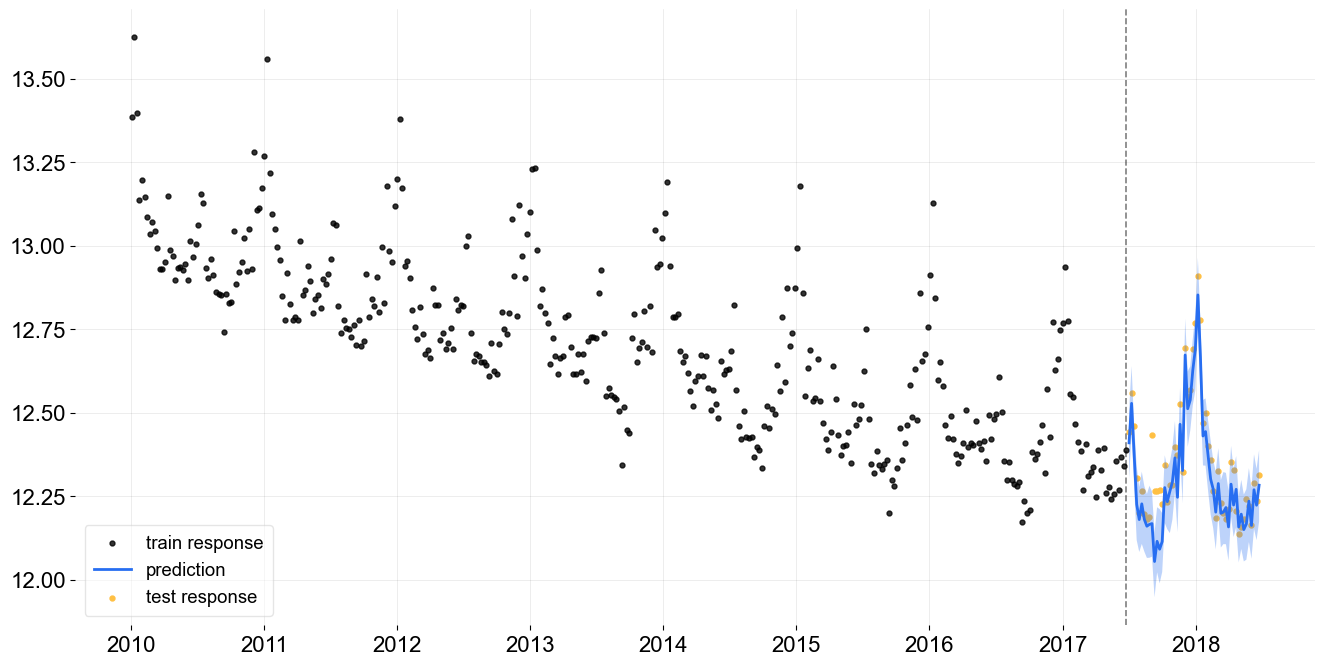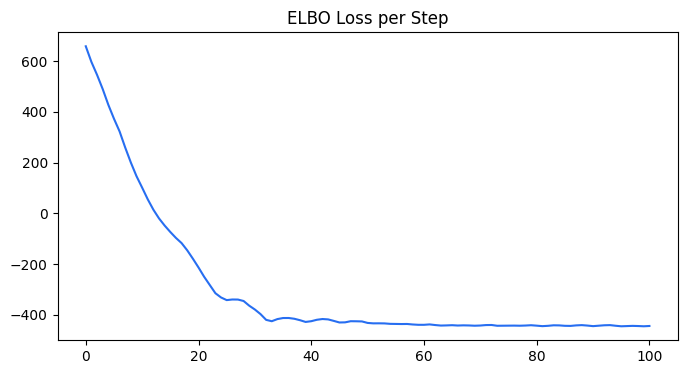Using Pyro for Estimation¶
Note
Currently we are still experimenting with Pyro and support Pyro only in LGT and KTR models.
Pyro is a flexible, scalable deep probabilistic programming library built on PyTorch. Pyro was originally developed at Uber AI and is now actively maintained by community contributors, including a dedicated team at the Broad Institute.
[1]:
%matplotlib inline
import pandas as pd
import numpy as np
import matplotlib.pyplot as plt
import orbit
from orbit.models import LGT
from orbit.diagnostics.plot import plot_predicted_data
from orbit.diagnostics.plot import plot_predicted_components
from orbit.utils.dataset import load_iclaims
from orbit.constants.palette import OrbitPalette
/Users/towinazure/opt/miniconda3/envs/orbit39/lib/python3.9/site-packages/tqdm/auto.py:21: TqdmWarning: IProgress not found. Please update jupyter and ipywidgets. See https://ipywidgets.readthedocs.io/en/stable/user_install.html
from .autonotebook import tqdm as notebook_tqdm
[2]:
print(orbit.__version__)
1.1.4.3
[3]:
df = load_iclaims()
/Users/towinazure/edwinnglabs/orbit/orbit/utils/dataset.py:27: UserWarning: Could not infer format, so each element will be parsed individually, falling back to `dateutil`. To ensure parsing is consistent and as-expected, please specify a format.
df = pd.read_csv(url, parse_dates=["week"])
[4]:
test_size=52
train_df=df[:-test_size]
test_df=df[-test_size:]
VI Fit and Predict¶
Although Pyro provides a variety of ways to optimize/sample posteriors. Currently, we only support Stochastic Variational Inference (SVI). For details, please refer to this doc.
To use SVI for LGT, specify estimator as pyro-svi.
[5]:
lgt_vi = LGT(
response_col='claims',
date_col='week',
seasonality=52,
seed=8888,
estimator='pyro-svi',
num_steps=101,
num_sample=300,
# trigger message per 50 steps
message=50,
learning_rate=0.1,
)
[6]:
%%time
lgt_vi.fit(df=train_df)
2024-01-07 17:06:45 - orbit - INFO - Using SVI (Pyro) with steps: 101, samples: 300, learning rate: 0.1, learning_rate_total_decay: 1.0 and particles: 100.
/Users/towinazure/opt/miniconda3/envs/orbit39/lib/python3.9/site-packages/torch/__init__.py:614: UserWarning: torch.set_default_tensor_type() is deprecated as of PyTorch 2.1, please use torch.set_default_dtype() and torch.set_default_device() as alternatives. (Triggered internally at /Users/runner/work/pytorch/pytorch/pytorch/torch/csrc/tensor/python_tensor.cpp:453.)
_C._set_default_tensor_type(t)
2024-01-07 17:06:46 - orbit - INFO - step 0 loss = 658.91, scale = 0.11635
INFO:orbit:step 0 loss = 658.91, scale = 0.11635
2024-01-07 17:06:49 - orbit - INFO - step 50 loss = -432, scale = 0.48623
INFO:orbit:step 50 loss = -432, scale = 0.48623
2024-01-07 17:06:52 - orbit - INFO - step 100 loss = -444.07, scale = 0.34976
INFO:orbit:step 100 loss = -444.07, scale = 0.34976
CPU times: user 6.02 s, sys: 611 ms, total: 6.63 s
Wall time: 6.18 s
[6]:
<orbit.forecaster.svi.SVIForecaster at 0x177b14850>
[7]:
predicted_df = lgt_vi.predict(df=test_df)
[8]:
_ = plot_predicted_data(training_actual_df=train_df, predicted_df=predicted_df,
date_col=lgt_vi.date_col, actual_col=lgt_vi.response_col,
test_actual_df=test_df)

We can also extract the ELBO loss from the training metrics.
[9]:
loss_elbo = lgt_vi.get_training_metrics()['loss_elbo']
[10]:
steps = np.arange(len(loss_elbo))
plt.subplots(1, 1, figsize=(8, 4))
plt.plot(steps, loss_elbo, color=OrbitPalette.BLUE.value)
plt.title('ELBO Loss per Step')
[10]:
Text(0.5, 1.0, 'ELBO Loss per Step')
